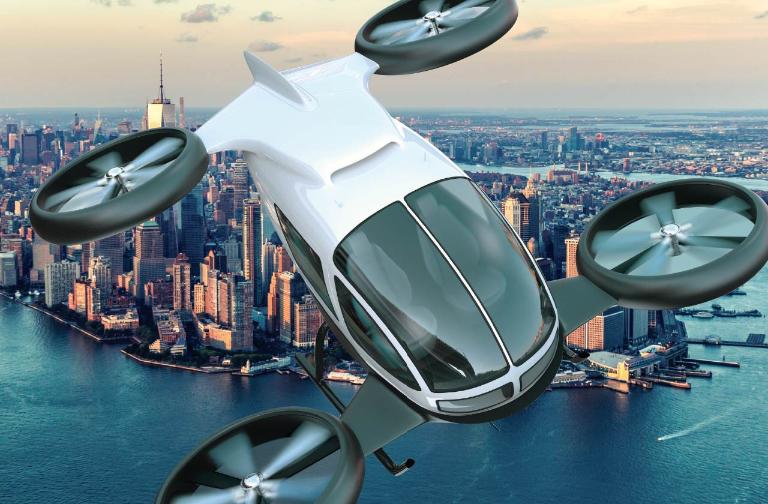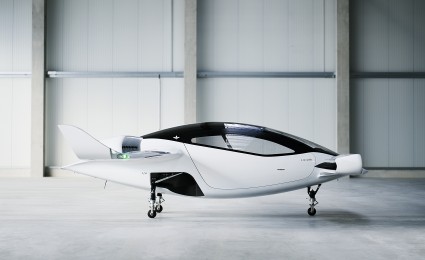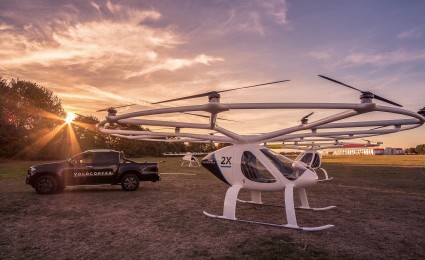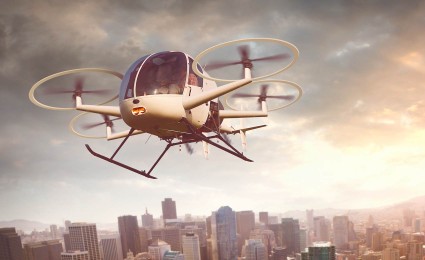Urban air mobility poised to become a fast-growing new market


Urban Air Mobility: Blade seeks to democratize short-distance air travel
eVTOL vehicles will gradually take over market share from traditional helicopters and aircrafts
Blade is an app-based flying taxi service that offers short-distance helicopter or plane flights in a number of US states as well as Mumbai, India. The company doesn’t manufacture or buy its own aircraft, instead it works with third parties and serves as a platform for booking aviation vehicles. In our interview, CTO Brandon Keene explains his view on the evolving eVTOL market and what it will take to scale up Urban Air Mobility.

"We will be successful when taking an eVTOL to get to your destination becomes 'boring'."
What makes Blade special?
Brandon Keene: The essence of Blade is to democratize short-distance travel with helicopters and aircraft. If you look five years back, helicopters where typically still restricted to a customer base of high net worth individuals (HNWI) as well as top managers from big corporates, which left underutilized capacity in the market. We basically took this underutilized helicopter and aircraft capacity and are offering it via an app. By pooling different passengers for a flight this allows us to further drive down the cost for the individual passenger. We also do not want to replace any existing public transport but want to move as many people as possible and relieve some of the current traffic issues, until more capex heavy infrastructure is built. We achieve this by being operator- and aircraft-agnostic and by providing passenger transport from A to B and by selecting the most appropriate vehicle for this. This has particular advantages in case of adverse weather conditions and allows us also to offer different routes and flight distances to passengers.
How may this change with the emergence of the eVTOL?
Brandon Keene: In the first years I do not expect much change due to the introduction of eVTOL vehicles. They will first have a co-existence period with traditional helicopters and general aviation aircraft and will then gradually take over market share from them. The advantage of eVTOL vehicles is that they allow the resolution of some problems currently associated with traditional helicopters or aircraft as they will significantly reduce noise pollution. In addition, eVTOL vehicles will be much better at addressing the current trend towards sustainability and reduction of CO2 emissions.
Will the introduction of eVTOL vehicles be faster than the switch from horses to cars?
Brandon Keene: I don't think that it will be faster. When thinking about the switch from horses to cars the infrastructure was mostly available, such as for example the streets. However, when thinking about the large-scale introduction of eVTOL vehicles the required infrastructure is very different from what we currently have available in urban areas. Therefore respective "lanes in the sky" need to be developed. Landing sites for helicopters as well as airports can be further used – but the total number of sites available, as well as the services they provide, must be expanded significantly. In addition, the surrounding ecosystem such as drone control centers, 5G communication networks as well as the integration into the existing Air Traffic Management (ATM) system needs to be set up.
How do you perceive the future market potential of UAM?
Brandon Keene: Based on my view UAM will have a great future market potential. Take New York City as an example: we believe that on an annual basis around 36 million passengers are going from NYC to the three airports by car, such as for example with family members, ride-share or taxi. All these passengers are potential future customers if UAM flights can be offered at lower cost than with ride-sharing or taxis.
What needs to be ensured in order to scale up UAM?
Brandon Keene: On one front, passengers need to be made aware of the new UAM offerings, and their benefits – including being informed of their relative safety and reliability. In addition, flight time and operation restrictions applied to helicopters and eVTOL vehicles, which currently have very limited flight times, should be allowed to fly 24/7 and get access to new landing sites. In addition, it would make sense to include eVTOL vehicles into a broader network of aircrafts and helicopters, similar to what Blade is offering. This allows passengers to be offered a vehicle-agnostic flight from A to B and allows operators to switch from, for example, an eVTOL vehicle to an IFR (Instrumental Flight Rules) aircraft in case weather situations are too adverse. The additional benefit is that passengers just have one app to manage their whole trip, independent of the vehicle. However, one big challenge which I see is the willingness of the municipal governments to allow for a high number of eVTOL vehicles to fly over urban areas.
Currently we're seeing a lot of startups active in the field of UAM but also traditional aerospace OEMs such as Airbus, Boeing and Bell. How will these OEMs help to develop the industry?
Brandon Keene: The startups such as ehang, Volocopter or Lilium are more innovative and faster in developing the eVTOL vehicle as well as the required UAM ecosystem, such as for example the drone control center or the landing site. But the traditional OEMs have a huge role in maturing the UAM ecosystem and, in particular, with respect to certification, regulation as well as the integration into the existing Air Traffic Management (ATM) system. In addition, these OEMs are also very active in investing along the entire UAM ecosystem. This allows them to gain insights into the different sub-systems of the ecosystem and systematically build the competence to specify the overall system. We have more closely aligned our vision with traditional OEMS like Airbus and Bell because they share our view of evolutionary regulatory frameworks and piloted operation for first-gen eVTOLs. The companies that have successfully built and certified aircraft for over a decade we think are better positioned to understand and meet the challenges of certification. This is in marked contrast to startups who may have an overly ambitious timeline and a more difficult path to market by jumping straight to autonomous.
What will determine the economic viability of the business model?
Brandon Keene: A lot of people perceive that Urban Air Mobility will be an order of magnitude less expensive than current helicopter services. However, it is not only the initial cost of the eVTOL vehicle and the operation cost which determine the cost basis for the end-customer, but also specifically the ability to pool different people for a flight. Another contributor will be the cost for the additional infrastructure, and in particular the cost of landing sites in city centers. In case the cost for this infrastructure is too high the overall business case of the eVTOL vehicles might not fly.
Let's talk about investments: what sub-systems will make or break the future?
Brandon Keene: Based on my view it is not so much the eVTOL vehicle and its sub-systems but rather the availability of landing sites. Therefore, investors will look into how the current available landing infrastructure for helicopters can be enhanced, such as for example the number and location of landing sites as well as their offering (e.g. charging, maintenance).
Will we see standardized heliports in the future?
Brandon Keene: Today there is a huge difference between the different landing sites for helicopters ranging from a grass spot on a golf course to an airport. But I really hope that there is in the future the opportunity to build standardized heliports similar to what we see today with franchise business such as McDonalds. This will not only benefit the future eVTOL vehicles but also traditional helicopters which will still be needed for some time.
What needs to be achieved to claim success for Urban Air Mobility?
Brandon Keene: We will have won and made Urban Air Mobility successful when we have democratized it and people are using it the same way as they are currently using public transport, i.e. we will be successful when taking an eVTOL to get to your destination becomes "boring".
Contact our experts: Would you like to know more about how your company can prepare for Urban Air Mobility? Please don't hesitate to connect with our experts Manfred Hader and Stephan Baur .






